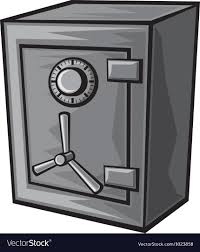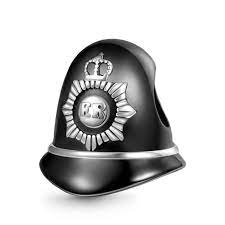Ensuring a Safe Journey: The Importance of Road Safety Practices

The Importance of Safe Driving: Protecting Yourself and Others on the Road
Safe driving is not just a responsibility; it is a crucial aspect of road travel that affects everyone on the road. Whether you are a seasoned driver or just starting out, understanding and practising safe driving habits can make a significant difference in preventing accidents and keeping yourself and others safe.
One of the key elements of safe driving is following traffic rules and regulations. This includes obeying speed limits, using indicators when changing lanes, stopping at red lights, and yielding to pedestrians. By adhering to these rules, you contribute to a safer road environment for everyone.
Another important aspect of safe driving is avoiding distractions while behind the wheel. This means refraining from using your phone, adjusting the radio, eating, or engaging in any other activities that take your focus away from the road. Distracted driving significantly increases the risk of accidents and endangers not only yourself but also other road users.
Maintaining your vehicle in good condition is also essential for safe driving. Regularly checking your brakes, tyres, lights, and other vital components can help prevent mechanical failures that could lead to accidents. Ensuring that your vehicle is roadworthy before setting off on any journey is a proactive step towards promoting safety on the road.
Being aware of your surroundings and anticipating potential hazards is another crucial aspect of safe driving. Keeping a safe distance from other vehicles, scanning the road ahead for obstacles or changes in traffic flow, and being prepared to react quickly in unexpected situations are all part of defensive driving practices that can help prevent accidents.
Lastly, always remember that driving under the influence of alcohol or drugs poses a severe risk to yourself and others on the road. Impaired judgment, slowed reaction times, and decreased coordination make it dangerous to operate a vehicle while intoxicated. If you plan to drink or take medication that may affect your ability to drive safely, always designate a sober driver or arrange alternative transportation.
In conclusion, safe driving is paramount for protecting yourself and others on the road. By following traffic rules, avoiding distractions, maintaining your vehicle properly, staying alert to potential hazards, and never driving under the influence, you contribute to creating a safer environment for all road users. Let’s make safe driving a priority every time we get behind the wheel.
Five Essential Safety Tips to Secure Your Home and Protect Your Personal Information
- Always lock your doors and windows when leaving your home.
- Never share personal information, such as passwords or bank details, with strangers online.
- Ensure you have working smoke alarms in your home and test them regularly.
- Be cautious when using public Wi-Fi networks and avoid accessing sensitive information on them.
- Regularly update your computer’s antivirus software to protect against cyber threats.
Always lock your doors and windows when leaving your home.
It is essential to always lock your doors and windows when leaving your home to ensure the safety and security of your property. By taking this simple precaution, you can deter potential intruders and protect your belongings from theft or damage. Locking up before you go out not only gives you peace of mind but also helps to create a secure environment for you and your family. Remember, a small step like locking your doors and windows can make a big difference in safeguarding your home.
Never share personal information, such as passwords or bank details, with strangers online.
It is crucial to prioritise online safety by never sharing personal information, such as passwords or bank details, with strangers. Protecting your sensitive data is essential in safeguarding yourself against potential cyber threats and identity theft. Be cautious and vigilant when interacting with unknown individuals online to ensure that your personal information remains secure and confidential. By following this simple yet vital tip, you can significantly reduce the risk of falling victim to online scams or fraudulent activities.
Ensure you have working smoke alarms in your home and test them regularly.
Ensuring you have working smoke alarms in your home and testing them regularly is a vital safety measure that can save lives. Smoke alarms act as an early warning system in the event of a fire, giving you and your family precious time to evacuate safely. Regular testing of smoke alarms ensures that they are functioning correctly and ready to alert you to any potential fire hazards. By taking this simple yet crucial step, you significantly enhance the safety of your home and provide invaluable protection for yourself and your loved ones.
Be cautious when using public Wi-Fi networks and avoid accessing sensitive information on them.
When it comes to staying safe online, exercising caution when using public Wi-Fi networks is essential. Public Wi-Fi hotspots, such as those in cafes, airports, or libraries, can be convenient for staying connected on the go, but they also pose security risks. It’s advisable to avoid accessing sensitive information, such as banking details or personal accounts, when connected to public Wi-Fi as these networks are more vulnerable to cyber threats. By being mindful of the risks and refraining from sharing sensitive data on public Wi-Fi networks, you can help protect your personal information and safeguard your online privacy.
Regularly update your computer’s antivirus software to protect against cyber threats.
Regularly updating your computer’s antivirus software is a crucial step in safeguarding your digital information and protecting against cyber threats. By ensuring that your antivirus software is up to date, you can stay ahead of potential malware, viruses, and other online dangers that could compromise your data security. Taking this proactive measure not only helps to keep your computer system running smoothly but also provides peace of mind knowing that you have an added layer of defence against cyber attacks. Stay vigilant and prioritise regular updates to keep your digital world safe and secure.


